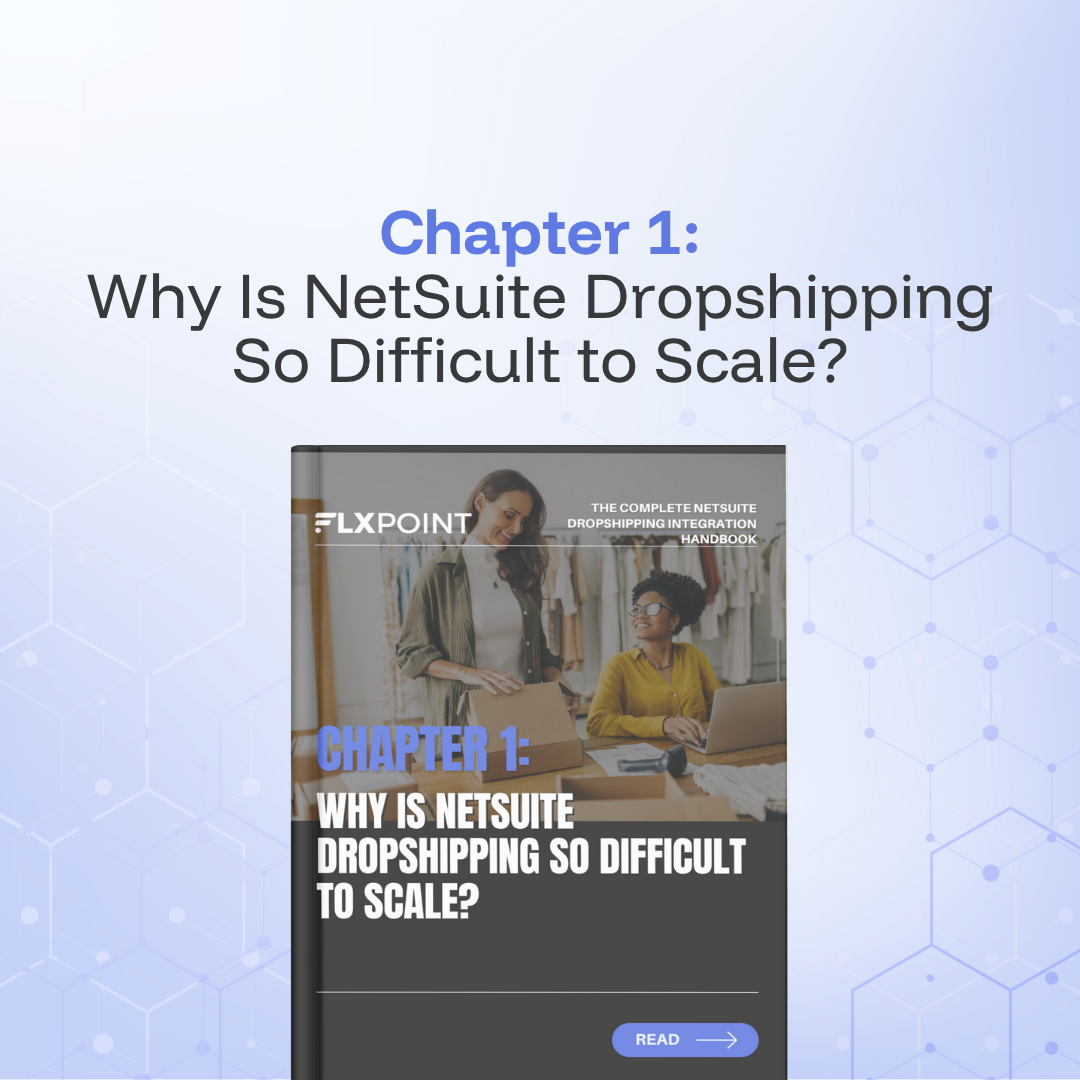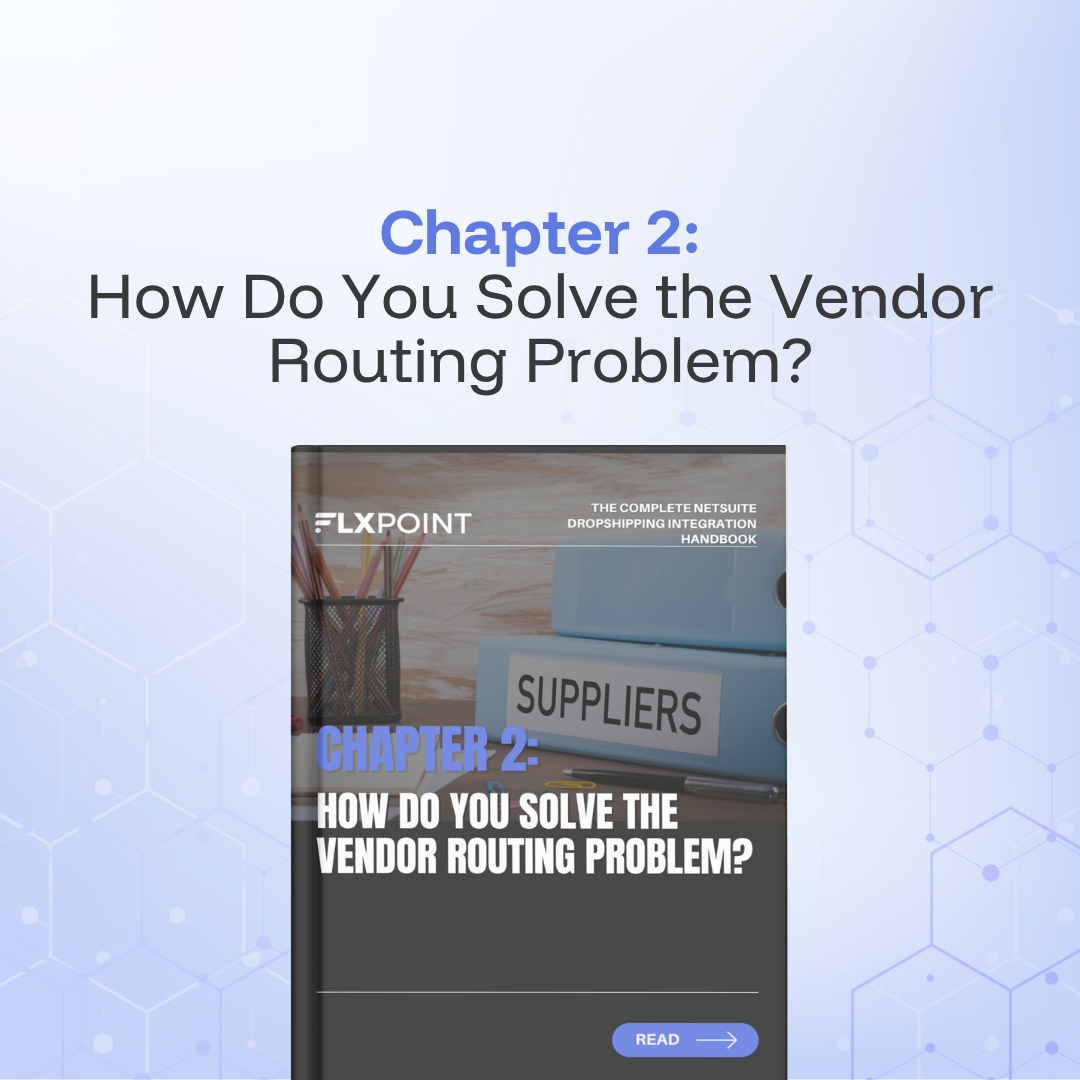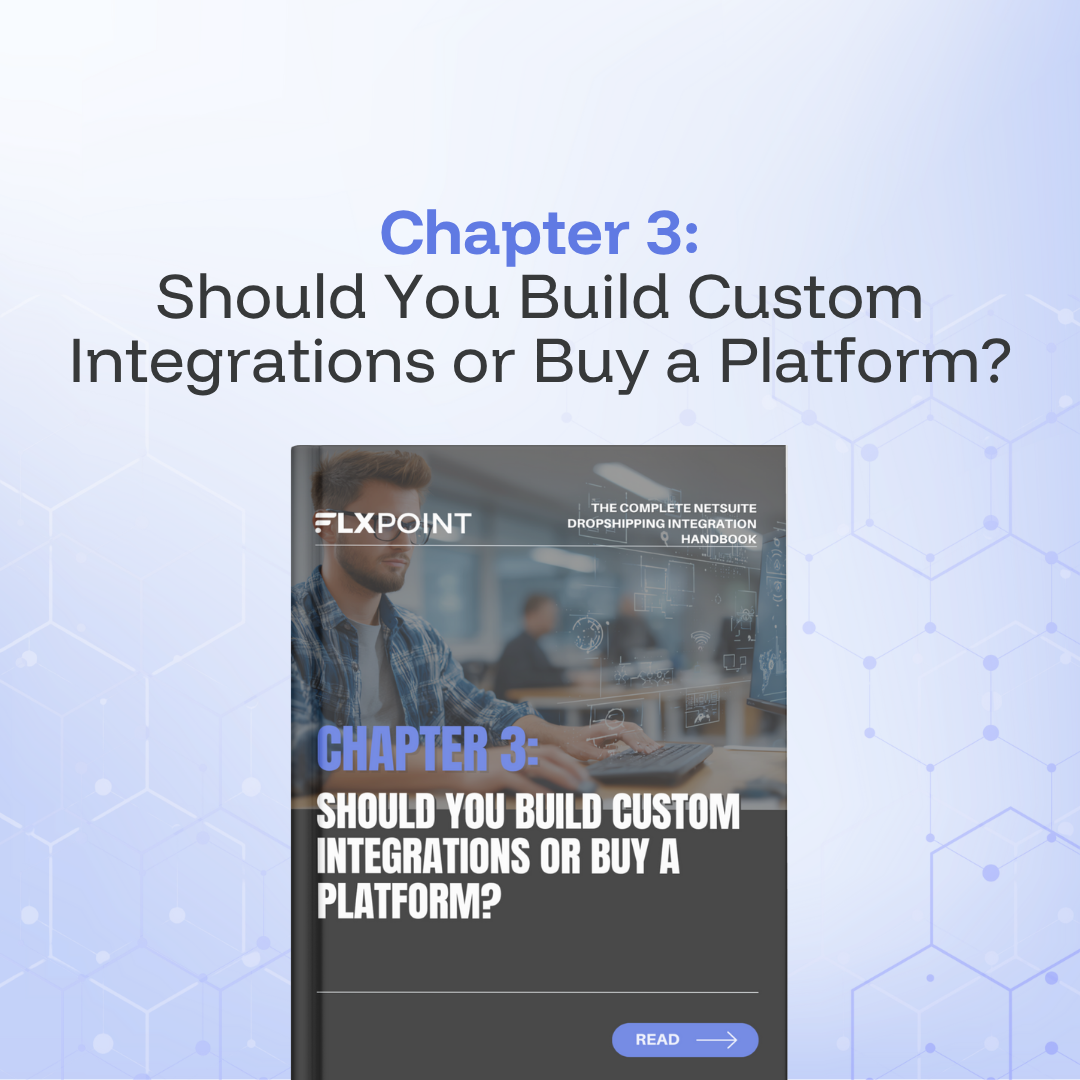Chapter 2 How Do You Solve the Vendor Routing Problem?

Moving Beyond "Preferred Vendor" Limitations
If you've worked with NetSuite dropshipping for any length of time, you've experienced this frustration: An order comes in. NetSuite automatically creates a purchase order for your "preferred vendor." You check the vendor's inventory feed and discover they're out of stock. Now you need to manually change the PO to a different vendor, update the records, and hope nothing breaks in the process.
This happens dozens or hundreds of times per week. It's not just annoying; it's actively costing you money and limiting your growth. The preferred vendor model made sense in an era of simpler supply chains, but modern dropshipping demands something smarter.
Why Is Single-Vendor Routing Killing Your Margins?
The preferred vendor trap
NetSuite's preferred vendor feature seems logical at first glance. You designate your best vendor for each product, and orders automatically route to them. Set it and forget it, right?
The problem is that "best vendor" isn't a static designation. It changes based on constantly shifting factors:
- Inventory availability – Your preferred vendor runs out of stock. Suddenly they're not the best choice at all. But NetSuite doesn't know this and keeps routing orders their way, forcing you to manually intervene or disappoint customers.
- Pricing fluctuations – Vendors adjust pricing based on promotions, volume discounts, manufacturer costs, and competitive pressure. The vendor who offered the best price three months ago when you set them as "preferred" might now be the most expensive option.
- Shipping costs and speed – A vendor located closer to your customer can deliver faster and cheaper. But NetSuite doesn't consider geography when routing orders. You end up paying higher shipping fees and longer delivery times because you can't dynamically route based on customer location.
- Vendor performance – Some vendors consistently ship on time. Others are chronically late. Some carefully pack items. Others have high damage rates. As you gather this performance data, you want to route more orders to reliable vendors and fewer to problematic ones. Preferred vendor routing doesn't allow this nuanced approach.
What Is Dynamic Multi-Supplier Order Routing?
The core concept
Dynamic order routing means your system evaluates multiple potential fulfillment sources for each order in real-time, then automatically selects the best option based on current conditions and your business rules.
Instead of asking "Who is the preferred vendor for this item?" dynamic routing asks "Who is the best vendor to fulfill this order right now given inventory, cost, location, and performance factors?"
This shift; from static preferences to dynamic decision-making; unlocks massive efficiency gains and cost savings.
How dynamic routing works
When an order comes into your system, platforms like Flxpoint allow dynamic routing:
- Identify fulfillment options – The system checks which vendors (and potentially your own warehouse) currently have the ordered items in stock.
- Apply business rules – Based on your predefined logic, the system evaluates each option against criteria like:
- Unit cost and total order cost
- Shipping cost from vendor location to customer
- Expected delivery time
- Vendor performance scores
- Order minimums or volume discounts
- Strategic vendor preferences
- Calculate the optimal route – The system scores each option and selects the best vendor based on your priorities.
- Create and send the order – A purchase order gets created in NetSuite and automatically transmitted to the selected vendor in their required format.
This entire process happens in seconds, with no manual intervention required.
Business rules you can implement
The power of dynamic order routing comes from its flexibility. You define the rules that matter to your business. Common routing logic includes:
- Cost optimization – Always select the vendor with the lowest total delivered cost (product price plus shipping). This maximizes your margin on every order.
- Inventory prioritization – Route orders to vendors with the highest available quantities first, reducing backorder risks.
- Speed priority – For customers who paid for expedited shipping, select vendors with the fastest delivery times regardless of cost.
- Geographic routing – Choose vendors closest to the customer's shipping address to minimize transit time and shipping expenses.
- Performance weighting – Factor in each vendor's on-time shipping rate, defect rate, and customer satisfaction scores. Gradually shift volume away from underperforming vendors.
- Strategic allocation – Maintain a target distribution of orders across vendors to preserve relationships or qualify for volume discounts.
- Warehouse first – If you stock items in your own warehouse, always fulfill from your inventory before routing to dropship vendors. This maximizes control and often improves margins.
- Split order intelligence – When a customer orders multiple items, determine whether it's better to split the order across vendors (faster fulfillment) or consolidate with one vendor (lower shipping costs, better customer experience).
You can combine these rules and adjust their priority based on your business model. A firearms dealer might prioritize cost above all else. A high-end outdoor retailer might weight delivery speed and vendor quality more heavily. The system adapts to your needs.
How Does Automated Routing Reduce Backorders?
The inventory visibility challenge
One of the biggest causes of backorders in dropshipping is simple: you don't know what your vendors actually have in stock until you try to order it.
Many vendors provide inventory feeds; CSV files, API endpoints, or EDI transmissions that list available quantities. But these updates might happen once per day, or even less frequently. Between updates, inventory levels change. Popular items sell out. Vendors receive new shipments. Your data becomes stale.
When your routing system relies on outdated inventory information, you end up creating purchase orders for items that aren't available. The vendor comes back with "sorry, we're out of stock," and now you need to scramble to find another source or cancel the customer order.
Real-time inventory synchronization
Dynamic routing platforms like Flxpoint solve this by maintaining near-real-time inventory synchronization with your vendors. Instead of waiting for daily batch updates, the system continuously polls vendor inventory or receives push notifications when quantities change.
When an order comes in, the routing engine knows; within minutes; which vendors actually have the items in stock right now. It immediately excludes out-of-stock vendors from consideration and routes to available sources.
This real-time visibility virtually eliminates the scenario where you create a PO only to learn the vendor can't fulfill it.
Fallback vendor logic
Even with real-time inventory data, situations arise where your first-choice vendor can't fulfill an order. Maybe they had stock five minutes ago but just sold out. Maybe they're temporarily offline for system maintenance. Maybe they declined the order due to a shipping restriction.
Dynamic routing handles this gracefully through fallback logic. If the first vendor can't fulfill the order, the system automatically moves to the second-best option, then the third, until it finds a vendor who can complete the order.
This happens automatically, in seconds, without anyone touching it. Your team doesn't waste time manually checking vendors one by one. Customers don't experience delays while you figure out fulfillment.
Combining quantities from multiple vendors
Here's a powerful feature that's impossible with preferred vendor routing: aggregating inventory quantities across multiple vendors into a single product listing.
Imagine you're selling a popular automotive accessory. Vendor A has 5 units in stock. Vendor B has 8 units. Vendor C has 12 units. Instead of maintaining three separate listings or risking overselling by listing 25 units you don't control, dynamic routing lets you safely list the combined quantity.
When orders come in, the system distributes them across vendors based on your routing rules. Customer A's order goes to Vendor C (best price). Customer B's order goes to Vendor A (closest shipping location). The combined listing stays accurate because the system tracks allocations in real-time.
This approach lets you offer better availability without increasing risk, improving your conversion rates and customer satisfaction.
Backorder prevention in action
Suppose the influencer posts their viral video. Orders start flooding in. The first batch of orders routes to Distributor A as usual because they have the best price.
After Distributor A fulfills 20 orders, the system detects their inventory has dropped to zero. Instantly before another order even processes the routing engine removes Distributor A from consideration and starts sending orders to Distributor B and C who still have stock.
Customer 21 through 40 get their orders fulfilled by Distributor B. No delays. No backorders. No manual intervention. The system handled it automatically, and your customers never knew there was any complexity behind the scenes.
Measurable impact
Businesses that implement dynamic routing typically see:
- 50-80% reduction in backorders – Real-time inventory data and smart fallback logic nearly eliminate "out of stock" scenarios
- 90% fewer cancelled orders – When you can route to multiple vendors, you almost always find someone who can fulfill
- Faster fulfillment times – Geographic routing gets products to customers quicker
- Improved margin by 3-8% – Always routing to the most cost-effective vendor adds up significantly over thousands of orders
These aren't theoretical benefits. They're real improvements that show up in your bottom line and customer satisfaction scores.
Ready to implement intelligent order routing for your NetSuite dropshipping operation? Flxpoint's routing engine handles complex business logic across unlimited vendors, with real-time inventory sync and automatic failover. See how it works and book a demo.
All Chapters in This Guide

When internal systems can't keep up with order volumes, manual item record creation becomes a bottleneck. Learn how high SKU counts and rigid preferred vendor logic limit your ability to scale dropshipping operations profitably.

Building upon proper vendor selection requires strategic order routing. The hidden costs of preferred vendor dependencies make scaling difficult. Dynamic multi-supplier routing unlocks margin protection while reducing split shipments. Discover how intelligent automation picks the best vendor for every order automatically.

Beyond obvious expenses like custom development costs, there are hidden expenses like ongoing maintenance and governance limits. SuiteScript customizations create technical debt while pre-built platforms offer faster time-to-value. Explore how enterprise platforms deliver ROI through vendor connectivity and reduced developer dependencies.

Flxpoint delivers extraordinary reliability, immediate integrations, intelligent support, and optimized real-time inventory management. Strategic platform adoption positions organizations for sustained growth with automated order fulfillment. See the complete workflow from order placement to customer delivery without manual intervention.
Kenneth Cole's Smart Savings With Shopify EDI Connections
"They had never used Flxpoint before. But working with [the Flxpoint] team, they learned it and we're about to onboard our newest footwear partner, and you know that's big business for us.”
Mitul PatelKenneth Cole


How Flxpoint Helped Rifle Supply Automate & Grow
“I went line by line… whatever the inventory number was and cost value was, I calculated it and was blown away by how much that was worth— $300 million worth of product that I added to our web store.”
Chris MekdaraRifle Supply


The Ecommerce Automation Behind Screen Skinz
"Automation is the key to maximizing your volume. [Flxpoint] comes right into our flow — everything's automated. We want it to be quick and efficient. So that's what we love about Flxpoint."
Shaun Brown & Clay CanningScreenSkinz


How Inhaven Transformed Vendor Management with Flxpoint
"We ended up switching to Flxpoint, and it has been a much smoother process. Where it took us six months to get onboarded with the other company, we were up and running in a week or two with Flxpoint."
Ashley ChingInhaven


How Black Patch Performance Scaled Smarter with Flxpoint
"The only way to actually scale was to go through Flxpoint… You can’t even come close to hiring someone to do what Flxpoint does for the price."
Jonathan WilliamsBlack Patch Performance


